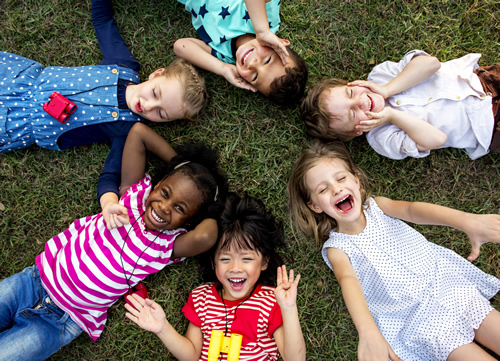Today’s kindergartners are the class of 2030, and by the time they enter the workforce, it will look vastly different. Occupations will need expertise, creativity, grit, and, most importantly, people who can learn and cultivate new skills.
But if we’re going to ensure the class of 2030 succeeds, our current education system needs an overhaul and a refreshed focus, according to a new report from Microsoft. The report, which is based on surveys of 2,000 students and 2,000 teachers, was conducted with McKinsey & Company.
Read more: How SEL inspired a transformation in my school
The report outlines a number of factors contributing to the need to overhaul the education system. It urges policymakers and educators to ensure the nation is preparing the class of 2030–and each class after that–for the future in a very different way than in the past:
- Unprecedented opportunities for collaboration
- The progressive automation of lower-skilled jobs
- Employers’ demands for workers with more well-rounded skills
- Students’ desire and expectation to operate with autonomy and choice
How to help the class of 2030 adapt for a different future
The report examines what teachers and school leaders can do to ensure the class of 2030 will thrive. It finds a need for a heightened focus on learners and more student-centric learning. The changes are interrelated, because one change enables improvements in another area, leading to additional benefits in yet another area.
1. Social and emotional skills (and the learning to build them): Already in high demand, and schools at both the K-12 and higher-ed levels are putting more focus on helping students develop these skill with targeted social and emotional learning. These skills aren’t new, the report notes, but they are “newly important.” It cites a survey in which 58 percent of employers say college graduates aren’t adequately prepared for today’s workforce, and those employers noted a particular gap in social and emotional skills. Students in the Microsoft report prioritize SEL higher than teachers do, and almost 40 percent of teachers say they don’t teach social and emotional skills through structured approaches because they lack time, support, and the right curriculum. Personalized learning could offer a pathway to a more student-centered learning model with a greater emphasis on SEL.
Read more: Are these preschools changing the future?
2. Personalized learning: This will play a critical role in preparing the class of 2030 because it supports a shift to a student-centered model customized to individual needs. Technology can support personalized learning by freeing up time teachers spend on routine tasks, allowing teachers to use that time to understand and interact with students. Sixty-seven percent of teachers in the Microsoft report agree that learning should be personalized.
3. Existing and emerging technologies: Three technologies outlined in the report are already proving powerful enough to support and enable changes in education. Technology can help teachers reclaim 20 to 30 percent of their time, letting them focus on student-centric goals such as building deeper relationships or giving real-time, personalized feedback. The three technologies mentioned in the report can help with these goals: collaboration platforms give students new opportunities to interact and work together and give teachers new ways to engage in professional learning; artificial intelligence gives teachers and schools new ways to understand student progress and curate content; and mixed reality creates immersive learning experiences to foster increased social and emotional growth.
In addition to the three areas of change, which are discussed in greater detail in the report, there are a number of actions educators can take, big and small, to help the class of 2030 start off on the right foot:
- Teachers can collaborate with fellow educators to create or pilot programs addressing social and emotional skills. Teachers also have a critical role in leveraging or creating teachable moments to reinforce these skills.
- School leaders can create the cultural climate for their school. Including staff in personalized learning experiences and identifying the social and emotional skills they want teachers to model in classrooms are two examples of setting the stage. School leaders also can help teachers prioritize their professional development by providing personalized learning approaches.
- Education system leaders will have to prioritize social and emotional skills and personalized learning approaches. They’ll also have to offer opportunities for school leaders and teachers to explore current and emerging technologies and the role they play in developing social and emotional skills and personalized learning.
Students deserve these changes, the report urges, because “today’s students will need new strengths and unprecedented versatility to navigate the world of 2030 and beyond. Technology can help teachers and schools prepare the class of 2030 for successful personal and professional lives. The imperative for change is clear. And the time to start is now.”
- A look at AI use in schools across the country - November 18, 2024
- 5 ways your classroom environment boosts student engagement - November 14, 2024
- Federal toolkit targets safe, ethical AI use in classrooms - November 11, 2024


